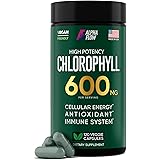Understanding and effectively managing alcohol withdrawal is a critical skill for any medical professional, particularly given the condition’s wide spectrum of severity. As highlighted in the accompanying video by Eric from Strong Medicine’s Intern Crash Course, alcohol withdrawal is not a monolithic entity; it manifests in distinct syndromes, each with its own timeline and clinical implications. This comprehensive guide elaborates on the nuances of these syndromes, proper risk stratification, and evidence-based treatment strategies to equip clinicians with the knowledge needed for optimal patient care.
Recognizing the Spectrum of Alcohol Withdrawal Syndromes
Alcohol withdrawal represents a complex neurophysiological response that occurs when a patient with chronic, heavy alcohol use abruptly reduces or ceases their alcohol intake. The presentation can range from mild discomfort to a life-threatening medical emergency. It is imperative to recognize these distinct clinical presentations to ensure timely and appropriate intervention.
Minor Alcohol Withdrawal: The Initial Stage
The first and most common manifestation is often referred to as minor withdrawal. Patients experiencing this syndrome typically present with a constellation of symptoms including anxiety, headaches, profuse sweating (diaphoresis), noticeable tremors, and cardiovascular effects such as a rapid heart rate (tachycardia) and palpitations. These symptoms commonly emerge within 6 to 24 hours following the patient’s last alcoholic drink. While termed “minor,” these symptoms can be profoundly distressing for the patient, underscoring the importance of empathetic and proactive management. Although symptoms can persist for up to a week, it is unusual for them to commence beyond two to three days into a period of abstinence.
Alcoholic Hallucinosis: A Sensory Disturbance
Moving up in severity, but still relatively uncommon, is alcoholic hallucinosis. This distinct syndrome involves the development of hallucinations, which are characteristically visual or tactile. Patients might describe seeing things that are not there or feeling sensations such as insects crawling on their skin. A key differentiator in alcoholic hallucinosis is that, despite the vivid hallucinations, the patient remains fully oriented and lucid; they understand that their experiences are not real. This condition can surface as early as 12 hours after the last drink, though it more typically presents between 24 and 36 hours.
Withdrawal Seizures: A Serious Complication
Withdrawal seizures represent a more serious clinical event, signifying significant neurological irritability. These seizures are usually brief, self-limiting, and followed by a short post-ictal period. Prolonged or recurrent seizures are not characteristic of alcohol withdrawal and should immediately prompt a thorough investigation for alternative underlying causes. The occurrence of a withdrawal seizure serves as a strong indicator of an increased risk for subsequent, more severe withdrawal phenomena, particularly delirium tremens. Appropriate management is essential to prevent further complications.
Delirium Tremens (DT): The Life-Threatening Syndrome
The most dangerous, yet fortunately less common, syndrome is delirium tremens, often abbreviated as DT. It is crucial to note that “DT” is a singular term, not plural. This syndrome is characterized by profound delirium, severe tachycardia, dangerously elevated blood pressure (severe hypertension), and significant body temperature dysregulation (severe hyperthermia). Patients with DT exhibit an extremely unstable autonomic nervous system, which is why DT makes alcohol withdrawal a potentially fatal condition. The onset of DT typically occurs later than the other syndromes, generally between 48 and 96 hours after the last drink, emphasizing the need for ongoing vigilance in patients undergoing withdrawal.
A crucial clinical pearl is that almost all patients who develop DT will have experienced some preceding manifestations of withdrawal. While classic descriptions often imply a sudden transition, the progression from minor withdrawal to DT is frequently a gradual escalation. For instance, profound anxiety may progressively worsen into delirium, and mild tachycardia can escalate into severe hemodynamic instability. Even with the best available treatment, the mortality rate associated with DT remains significant, hovering around 5%. Risk factors for developing DT include a prior history of DT or withdrawal seizures, an age exceeding 30 years, the presence of concurrent acute illnesses, and experiencing withdrawal symptoms even when the blood alcohol concentration (BAL) is still elevated, which suggests a pattern of very heavy and consistent alcohol consumption.
Effective Risk Stratification with the PAWSS Score
Given the wide range of severity in alcohol withdrawal, accurately predicting which patients are at high risk for developing severe withdrawal is paramount for guiding clinical decisions. The Prediction of Alcohol Withdrawal Severity Scale (PAWSS) is the most extensively validated tool for this purpose. To determine if a PAWSS score is even applicable, clinicians should first inquire if the patient has consumed alcohol within the past 30 days or check for a positive blood alcohol level upon admission. If either of these criteria is met, the patient receives their initial point, and the remainder of the scale should be administered.
Patients accrue additional points for specific risk factors, with each factor contributing one point to the total score. These factors include a history of at least one prior withdrawal episode, a previous withdrawal seizure, any documented episode of delirium tremens, a history of alcohol rehabilitation treatment, or experiencing alcohol-related blackouts. Furthermore, combining alcohol with benzodiazepines or barbiturates within the last 90 days, or with any other substances of abuse during the same timeframe, also adds a point. A high blood alcohol level on admission, specifically over 200 milligrams per deciliter, contributes another point, as does the presence of minor withdrawal symptoms upon evaluation. The maximum possible score on the PAWSS is 10 points. A score of 4 or higher indicates that the patient is at a significantly elevated risk of developing severe alcohol withdrawal, warranting a heightened level of clinical vigilance and potentially inpatient management.
Admission Criteria for Alcohol Withdrawal Management
The decision to admit a patient for inpatient alcohol withdrawal management hinges on several crucial factors. Foremost, the patient must clearly express a genuine desire to abstain from alcohol. Without this expressed willingness, inpatient admission may be counterproductive and even potentially dangerous, as the likelihood of resuming drinking post-discharge remains high. Once the patient’s commitment to sobriety is established, clinicians should evaluate for the presence of any of the following criteria, which, in combination with a desire to abstain, typically necessitate admission:
- A PAWSS score of 4 or more, indicating a high risk for severe withdrawal.
- Any documented history of withdrawal seizures or delirium tremens.
- The presence of withdrawal symptoms while the patient’s blood alcohol level is still elevated, suggesting a profound physiological dependence.
- Baseline cognitive impairment that would preclude the safe outpatient use of benzodiazepines, which are often prescribed for withdrawal.
- The presence of an unstable psychiatric illness that could be exacerbated by withdrawal or complicate outpatient management.
- An inability to attend daily or near-daily outpatient appointments for monitoring during the typical 5-7 day withdrawal period, which is essential for safe management.
Should any of these conditions be present, inpatient admission for closely monitored alcohol withdrawal treatment is generally recommended to ensure patient safety and optimize treatment outcomes. This structured approach helps prevent severe complications and ensures continuous clinical oversight.
First-Line Pharmacological Treatment: Benzodiazepines
Benzodiazepines are unequivocally the first-line treatment for all forms of alcohol withdrawal due to their ability to modulate GABA receptors, counteracting the excitatory neurotoxicity associated with withdrawal. In the United States, three benzodiazepines are predominantly utilized for this purpose, each with distinct pharmacokinetic properties that inform their clinical application.
Diazepam (Valium): Fast Onset, Long Duration
Diazepam, commonly known by its brand name Valium, is a preferred benzodiazepine for many patients in alcohol withdrawal. It boasts the fastest onset of action among the three commonly used agents, providing rapid symptom relief. Furthermore, diazepam is relatively long-acting, which can contribute to a smoother withdrawal course by maintaining more stable plasma concentrations. It is available in both intravenous (IV) and oral (PO) formulations, offering flexibility in administration. Typical initial doses range from 5 to 10 milligrams, whether administered IV or PO. The IV form can be repeated every 5 to 10 minutes until the patient’s symptoms show marked improvement. The clinical goal is to achieve a state where the patient is calm and perhaps slightly drowsy, yet remains easily arousable and able to engage in conversation.
Lorazepam (Ativan): Safer in Liver Disease
Lorazepam, marketed as Ativan, is another frequently used benzodiazepine. It is characterized by its relatively shorter duration of action compared to diazepam, which can occasionally lead to a less consistently smooth withdrawal course, potentially requiring more frequent dosing. However, a significant advantage of lorazepam lies in its unique metabolic pathway; it undergoes glucuronidation, which is generally less affected by hepatic impairment. Consequently, lorazepam is often the benzodiazepine of choice for patients who also have underlying liver conditions such as cirrhosis or alcoholic hepatitis, where other benzodiazepines might accumulate to toxic levels. Lorazepam is available in both IV and oral forms, with typical initial doses ranging from 2 to 4 milligrams. The IV formulation can be repeated every 15 to 20 minutes as clinically indicated, depending on symptom severity.
Chlordiazepoxide (Librium): Oral Outpatient Management
Chlordiazepoxide, widely recognized as Librium, shares a long-acting profile similar to diazepam. However, its availability is primarily in an oral formulation. This characteristic makes chlordiazepoxide particularly suitable for the outpatient management of alcohol withdrawal, often prescribed as a short, tapering regimen over several days. Initial oral doses typically range from 25 to 100 milligrams and can be repeated as frequently as every 2 to 3 hours on an as-needed basis. While it would be convenient to have a direct correlation between a patient’s historical alcohol consumption and their anticipated benzodiazepine requirements, no such reliable conversion exists. Nevertheless, patients who previously required unusually high doses of benzodiazepines during a past withdrawal episode are statistically more likely to require similar high doses in future episodes, an important consideration for clinical planning.
Symptom-Triggered Dosing: The Standard of Care
Historically, two primary philosophies guided benzodiazepine dosing for alcohol withdrawal: a fixed-schedule approach with a predetermined taper, and a symptom-triggered approach. Over time, extensive studies and clinical experience have definitively demonstrated the superiority of the symptom-triggered method. This approach yields outcomes that are as good as or even better than fixed-schedule dosing, while critically requiring a significantly shorter overall treatment duration, reducing medication exposure and hospital length of stay.
Implementing a symptom-triggered strategy necessitates a standardized and objective method for quantifying the severity of withdrawal symptoms. This is achieved through the Clinical Institute Withdrawal Assessment for Alcohol, Revised (CIWA-Ar) score. The CIWA-Ar system assigns points from 0 to 7 across ten distinct clinical criteria, which include anxiety, tremor, headache, orientation, diaphoresis, and hallucinations. A higher total score indicates a greater severity of withdrawal. A score less than 8 is considered minimal withdrawal, while a score exceeding 20 points denotes severe withdrawal. Many healthcare institutions have established protocols where nursing staff routinely assess a patient’s CIWA-Ar score at fixed intervals, often hourly upon initial admission. A specific dose of benzodiazepine is then administered if the patient’s score falls within a predefined therapeutic range. As the patient’s condition stabilizes and their score remains below a certain threshold for a specified number of hours, the frequency of assessment is gradually decreased. This systematized approach to withdrawal treatment minimizes the need for frequent physician pages, empowers nursing staff to act decisively, and most importantly, facilitates more rapid and effective treatment, improving patient comfort and safety.
Managing Refractory Delirium Tremens
On rare occasions, a patient with delirium tremens may exhibit resistance to conventional benzodiazepine regimens, even with aggressive dosing. In such challenging cases, alternative pharmacological strategies become necessary to stabilize the patient. These options typically include a continuous intravenous infusion of a benzodiazepine, which can deliver a higher, more consistent drug concentration. Furthermore, agents such as propofol, phenobarbital, or dexmedetomidine may be employed. It is important to recognize that most, though not all, patients who require treatment with these advanced agents will also necessitate endotracheal intubation and mechanical ventilation to support their respiratory function and manage their airway due to the profound sedative effects and compromised respiratory drive associated with these medications.
It is worth noting that a small contingent of experts has advocated for “benzo-sparing protocols,” which aim to minimize or avoid the routine use of benzodiazepines, instead utilizing agents like clonidine, dexmedetomidine, valproic acid, and gabapentin. However, current clinical trial data providing robust support for the widespread adoption of these alternative protocols is still limited. Therefore, their routine use cannot be broadly recommended as a first-line approach in the standard management of alcohol withdrawal.
Dangerous Historical Treatments to Avoid
While clinical practice evolves, some historically used treatments for alcohol withdrawal have been proven to be ineffective or even harmful and must be avoided. Phenytoin, for instance, has no proven efficacy in preventing or treating alcohol withdrawal seizures. Haloperidol, while useful for psychotic symptoms in other contexts, may offer some benefit for the psychotic features of hallucinosis and delirium tremens; however, it importantly lowers the seizure threshold and is not as effective as benzodiazepines in this specific clinical scenario. Finally, beta blockers, while effective at reducing tachycardia and potentially masking some symptoms of mild withdrawal, do so by obscuring vital signs rather than addressing the underlying pathological process. This masking effect can dangerously delay the recognition and subsequent appropriate treatment of early delirium tremens, potentially leading to adverse outcomes.
Essential Supportive Care and Comorbid Condition Management
Beyond pharmacological interventions, comprehensive supportive care is foundational to managing patients undergoing alcohol withdrawal. This includes vigilant administration of intravenous fluids to maintain hydration and electrolyte balance. Thiamine supplementation is critically important and must be administered *before* any glucose-containing solutions to prevent the precipitation or worsening of Wernicke’s encephalopathy, a serious neurological complication. Correcting electrolyte derangements, particularly hypophosphatemia, is also crucial for optimal physiological function. Furthermore, patients often require nutritional support, as chronic alcohol use frequently leads to significant malnutrition.
Simultaneously, clinicians must proactively identify and treat any comorbid conditions that frequently accompany chronic heavy alcohol use, as these can significantly complicate the course of withdrawal and recovery. An incomplete list of such conditions includes various forms of alcohol-related liver disease, alcoholic gastritis, aspiration pneumonia, pancreatitis, and a spectrum of psychiatric illnesses. Neurological complications are also common, encompassing conditions like alcohol-related dementia, cerebellar degeneration, and peripheral neuropathy. Addressing these concurrent medical issues is integral to successful treatment and long-term recovery from alcohol withdrawal.
Untangling Alcohol Withdrawal: Your Questions Answered
What is alcohol withdrawal?
Alcohol withdrawal is a complex physical and mental response that occurs when someone who regularly drinks a lot of alcohol suddenly stops or significantly reduces their intake.
What are common symptoms of minor alcohol withdrawal?
Common symptoms of minor alcohol withdrawal include anxiety, headaches, profuse sweating, tremors, and a rapid heart rate. These typically appear within 6 to 24 hours after the last drink.
What is the most serious form of alcohol withdrawal?
The most dangerous and potentially life-threatening form is Delirium Tremens (DT), characterized by severe confusion, high heart rate and blood pressure, and dangerously high body temperature. It usually appears 48 to 96 hours after the last drink.
What is the main medication used to treat alcohol withdrawal?
Benzodiazepines are the primary medications used for all forms of alcohol withdrawal. They help to calm the overactive nervous system caused by alcohol cessation.
How do doctors decide how much medication to give for alcohol withdrawal?
Doctors typically use a ‘symptom-triggered’ approach, where medication is given based on the patient’s current withdrawal symptoms, often assessed using a tool called the CIWA-Ar score.











